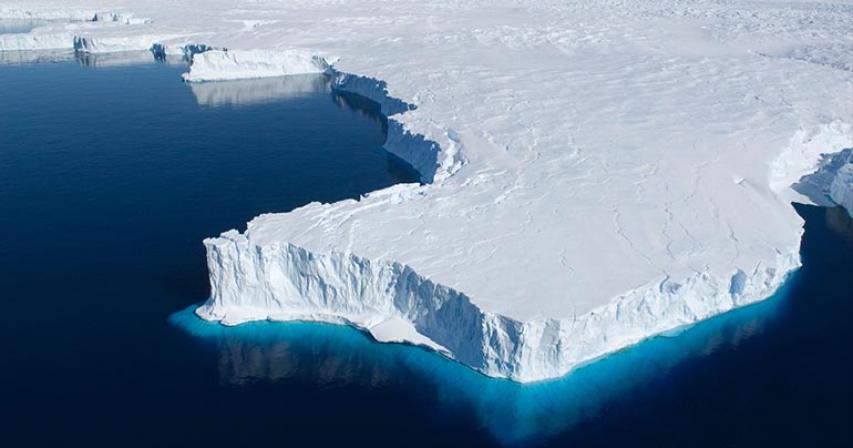Antarctica, in all its splendour, lives up to its nickname ‘The Ice’ and is one of the few places on Earth whose frigid and icy weather makes life on the continent near futile. It is no wonder that the accidental discovery of life forms nearly 900 metres below the surface of an ice shelf was an encounter that none of the scientists had foreseen.
The scientists who were a part of this study had taken up the research not with the goal of finding any living creatures, but rather with the aim of collecting mud samples from the seafloor.
The experts had drilled a borehole almost 900 metres deep into the Filchner- Ronne Ice Shelf, which is situated on the southeastern Weddell Sea. Soon after they had lowered their camera into the hole, they were able to spot the living creatures that were stuck to a boulder.
What Are The Living Creatures?
The creatures resembled stationary objects — similar to sponges or potentially unknown species. The most surprising aspect of the discovery, however, were the conditions under which these life forms were living.
The area where these boulders were situated constitutes one of the least known habitats on Earth. Huw Griffiths, the marine biologist who is the lead author of a study based on this discovery, spoke of how the encounter was particularly alarming to the geologists who found them.
He stated that “If there was lots of sunlight and an abundance of food, filter-feeding animals like these would usually dominate”. However, what was most confounding was how these animals were surviving in such deep-sea territory where food supply was very limited and temperatures were subzero.
The fact that these creatures have been able to survive these unthinkable living conditions, indicates that they are built far more different than the known filter-feeding animals and can therefore probably go without food for days, weeks, months or even years.
The discovery of these creatures has truly broken all of the previous assumptions that scientists had on how marine life could not survive these frigid temperatures. But at the same time, it raises some new questions about the unknown creatures.
These stationary animals constitute the first-ever-record of a hard substrate community living deep beneath layers and layers of ice. And more in-depth research of these ‘hardy’ organisms is likely to take place now, so that scientists can understand the survival mechanism of these creatures.
As Huw Griffiths said, “There is life on Earth that isn’t playing by the rules that biologists understand.”
This groundbreaking discovery is a sign that there is so much more in this world that is yet to be uncovered. This paves the way for other scientists to embark on expeditions and take up research studies in order to unearth other unknown living beings on Earth.
Sources: Business Insider, Hindustan Times, CNN

Comments